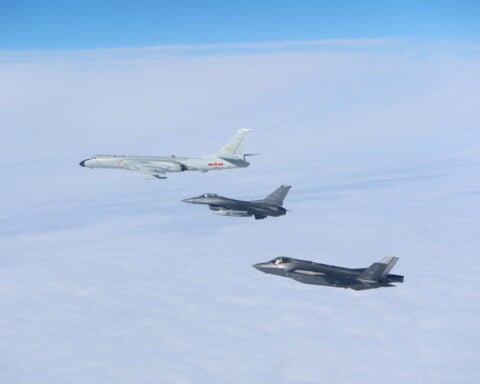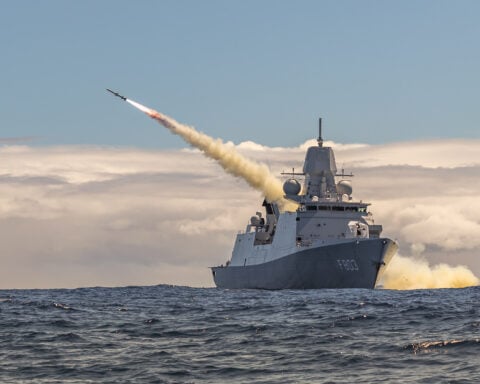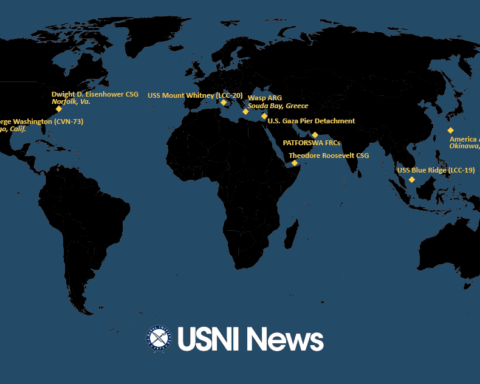
South Korea’s CVX aircraft carrier program received no funding in the latest budget proposal released this week, a move that puts the future of the programming in serious doubt.
The South Korean government requested about $ 42.4 billion for defense spending next year, a 4.6 percent increase from 2022, in its Aug. 30, defense budget proposal. Of this, about $13.3 billion was allocated to new acquisition programs, with the remaining funds assigned for maintenance and operations.
The 30,000-ton Republic of Korea Navy carrier was planned to field up to 20 short takeoff vertical landing F-35B Lightning II Joint Strike Fighters. But in July, the Republic of Korea Air Force purchased the F-35A ground variant, putting the carrier program in doubt, USNI News previously reported.
“The government has allocated significant funds to the defense budget despite its focus on creating a ‘healthy budget’ because of the very serious security situation,” according to a statement from Ministry of National Defense of South Korea
The budget reflects the priorities of the new administration under President Yoon Suk-yeol, who has downplayed the importance of CVX and emphasized that of the so-called “three-axis system” — a defense strategy aimed at deterring North Korea.
The three-axis system envisions a pre-emptive strike against North Korea when a nuclear attack against South Korea seems imminent, followed by the interception of missiles that have already been launched and a massive conventional retaliatory strike against the North Korean military and its top brass. Funding for the system will increase 9.4 percent or around $3.9 billion, according to the proposal.
That translates to a boost in South Korea’s submarine program. The KSS-III ballistic missile submarine program received around $185 million in the 2023 proposal. The boats are a crucial component of the third axis of the three-axis system, dubbed “Korean Massive Punishment and Retaliation (KMPR).”
Submarine-launched ballistic missiles (SLBM) from KSS-III are able to hit North Korean bunkers and command control facilities during a conflict with North Korea. In addition to its role in KMPR, the KSS-III submarines are ideal for shadowing the Sinpo-class, North Korea’s SLBM-capable submarines, due to the former’s improved range and endurance. ROKS Dosan Ahn Changho (SS-083), the lead ship of KSS-III Batch I, deployed for the first time earlier this month.
Other notable naval programs in the funding proposal include the Ulsan-class frigate and the anti-submarine warfare unmanned underwater vehicle (ASWUUV), which have been allocated $390 million and $26.5 million in funding, respectively.
The Ulsan-class frigates – which are 129m in length, 15m in width, displace 3,500 tons and have a maximum speed of 30 knots – will be the workhorse of the Republic of Korea Navy in the coming decades. Construction on the first ship began earlier this year in April.
The ASWUUV is a “large displacement umanned underwater vehicle” that is 6.5m long and displaces 9 tons. South Korea’s Agency for Defense Development and Hanwha have been jointly developing the system since 2017, with the first “operational demonstration” taking place in June earlier this year.
A version of this post originally appeared on Naval News. It’s been republished here with permission.





